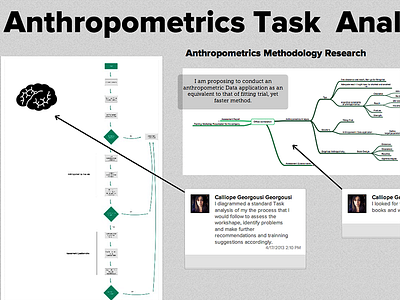Anthropometrics Analysis
This past month I was requested to conduct research and write an assessment, report and suggest an appropriate training for office workspace users.
My assessment was not based on a fitting trial but Anthropometric Data Application. I looked for tips in lecture notes, books and websites. I then diagrammed a standard TA for the process I would like to follow to assess the workspace, identify problems and make further recommendations as well as training suggestions accordingly.
I proposed a list of criteria and comparison guidelines for field observation.
My research brought forth a checklist , a comfort user questionnaire and a RULA assessment form, which was my highlight.
Using Bodyspace as my book reference, I had access to Data Tables and ISBN Guidelines, which in turn included detailed suggestions for the office station working posture, office desk and chair dimension for the limiting users and visual comfort guidelines for screen reading.
Field observation against this canon of metrics provided us with a ground in our findings and triangulation in our methodology. Giving us enough room to come up with adequate information to further conduct a training. In the training, which could be heavily supported by RULA recommendations, I proposed to take photos of users odd postures and present it to them after the correct posture training has been provided, so that they can better understand and gain awareness of their body and the impact to their workflow.
The experience of working on the said report after a good while, gave me confidence in my research skills and the presentation of work enhanced my need to improve them as well as the storytelling/ rationale behind them.
The feedback I received was rather positive, fallbacks in my report where noted and supportive suggestions were made. I am looking forward to delving deeper into ergonomics and see it from another perspective.
Ergonomics and how it was studied and utilised in archaeology is a field I am rather curious and find it fascinating.
